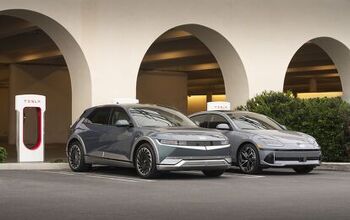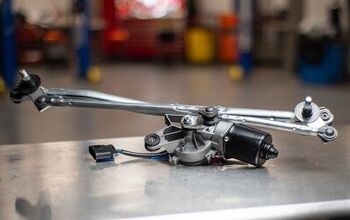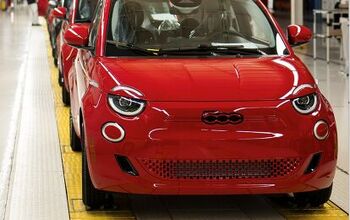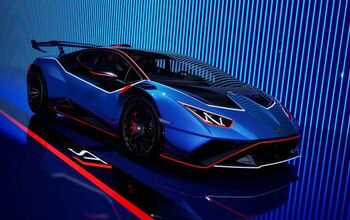Lamborghini Huracan LP 610-4: Absolutely Everything You Need to Know… Almost

Faster, lighter and much more drivable than any previous Lamborghini, this is everything you need to know about the new Huracan LP610-4.
OK, not everything. Driving impressions can be hard to write when the only seat time we’ve had is in a studio. Still, Lamborghini provided a deep-dive into the technical features of its new “affordable” model during a tech session at its headquarters in Sant’Agata Bolognese. Here’s the important stuff.
The 5.2-liter V10 engine, seemingly the same as that found in its Gallardo predecessor, is entirely new, engineered from the ground-up. It even features a combination of port and direct injection to maximize daily drivability and power. Fuel economy is improved and emissions reduced (by 11 percent) with features like start-stop and cylinder deactivation (though, oddly, the latter won’t make it’s way to North America).
The torque curve is less peaky with more power staying on past the 413 lb-ft 6500 rpm peak. And while naturally aspirated engines (a staple of Lamborghini’s engine philosophy) aren’t known for their torqueyness, this engine will deliver 75 percent of that thrust from just 1,000 rpm. Tip in has also been improved.
Aiding in power deliver is an all new 7-speed dual-clutch transmission, named Lamborghini Doppia Frizione (likely to hide its German roots) is designed to deliver ultra-fast shifts and be equally ideal for daily driving. CEO Stephan Winkelmann proclaims that more miles will be put on the Huracan by its drivers than any Lambo in history.
As with all (or nearly all) Lambos, power is sent to all four wheels, so in certain extreme circumstances a full 100 percent of the torque can be distributed to the rear wheels. Under normal driving conditions, the front to rear torque split is 30/70, while the system also enables as much as 50 percent of the power being set to the front axle.
As for the car’s design, it doesn’t just look beautiful, it’s a functional form too. With fewer wild angles than many of the Lamborghini concept cars we’ve seen of late (Veneno, we’re looking at you), it’s smoothness is used to hide its overall size says chief designer Filippi Perini. Taking simplification to a new level, he says just one core line forms the basis of the car.
The new shape delivers a three percent reduction in drag while also increasing downforce, amazingly, by 50 percent, without the addition of deploying spoilers – a boasting point made by Perini.
Carbon Fiber Meets Aluminum
Underneath the skin Lamborghini combines one of its core competencies (carbon fiber) with those of its corporate overlords at Audi, namely, aluminum. As a result, the platform, known as the Alu-CFK Hybrid Chassis combines a carbon fiber tub section forming the area around the seats and the rear firewall with an aluminum structure.
The result is a skeleton that is 10% lighter than the Gallardo’s while increasing torsional stiffness by 50 percent.
The Huracan’s interior is a new high point for the brand and one that the German ownership of the brand paid special attention to. “In the interior you can see a perfect mix of passion and perceivable quality,” said Perini. While still unmistakably filled with Italian flare, the Audi-levels of detail are obvious – as are the buttons, text font and even the unmistakable four-ringed red glow.
The steering wheel is a unique instrument with wiper and signal controls on the left and right sides of the face of the wheel, while located near the bottom is what Lambo calls the car’s ANIMA. In English that stands for “Adaptive Network Intelligent Management”, while in Italian ANIMA means “soul.”
The ANIMA is used to switch between settings (Strada, Sport and Corsa) and can adjust numerous features including: engine responsiveness, sound, gearbox behavior, the new dynamic steering system, the all-wheel drive power distribution and the new magnetic ride dampers.
Also of note is the central gauge cluster. A 12.3-inch TFT display it can show a centrally located speedometer or tachometer, or a combination of one with navigation. Or, ideal for city driving, the entire display can be filled with a massive navigation screen.
So how does it perform? For the feel-behind-the-wheel you’ll have to await our review, but official stats place it at 3.2 seconds to 62 mph (possibly a flat 3.0 to 60 mph) and 9.9 seconds to 124 mph. Top speed is significantly higher than that with official estimates of “at least” 202 mph!
Weighing just 1,422 kg or 3,135 lbs in dry weight (expect about 200 more on the road), it can stop from 62 mph in just 31.9 meters; that’s 104.7 feet or roughly 3.6 feet fewer than the Gallardo.
Tested at Nardo, it can lap the track two seconds faster than its predecessor (a standard Gallardo LP560-4) and chief engineer Maurizio Reggiani did say its time is superior to any version of the Gallardo, including the highest-performing models like the Superleggera or Strada Corse.
One additional fact that is missing is the price. For now Lamborghini will only say it will cost slightly more than the $181,900 asking price of the Gallardo.
Can’t get enough of the new Huracan? Look for our live photos and video direct from the Geneva Motor Show on Tuesday, March 5th.
GALLERY: Lamborghini Huracán LP 610-4

With AutoGuide from its launch, Colum previously acted as Editor-in-Chief of Modified Luxury & Exotics magazine where he became a certifiable car snob driving supercars like the Koenigsegg CCX and racing down the autobahn in anything over 500 hp. He has won numerous automotive journalism awards including the Best Video Journalism Award in 2014 and 2015 from the Automotive Journalists Association of Canada (AJAC). Colum founded Geared Content Studios, VerticalScope's in-house branded content division and works to find ways to integrate brands organically into content.
More by Colum Wood


































Comments
Join the conversation